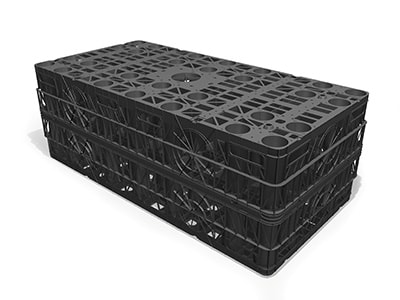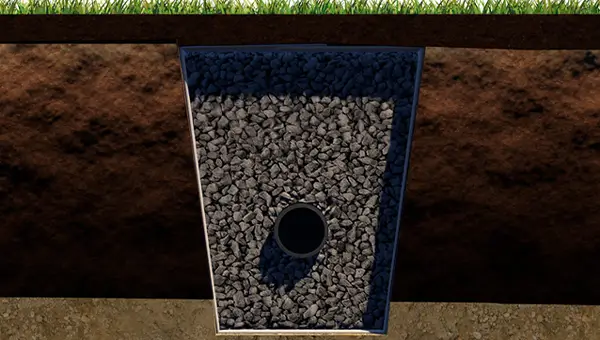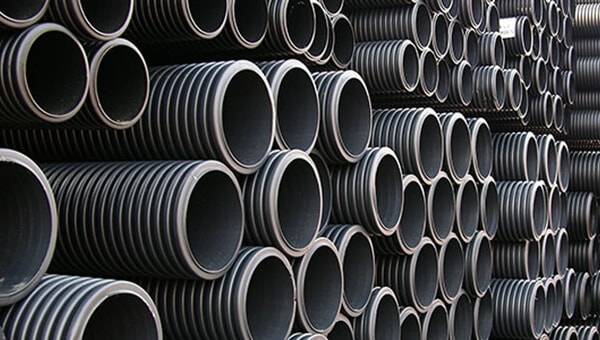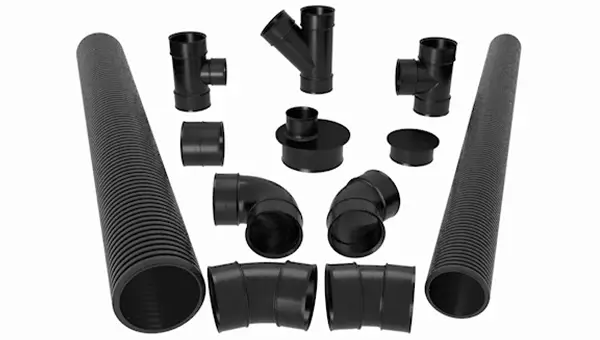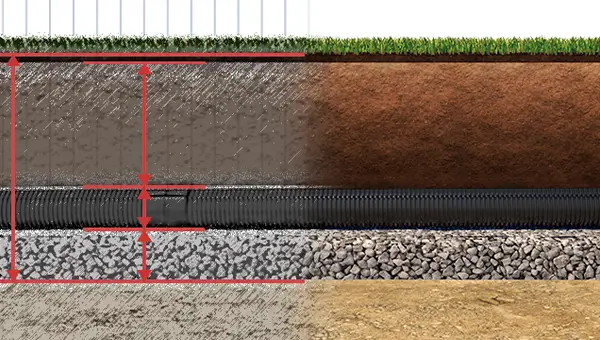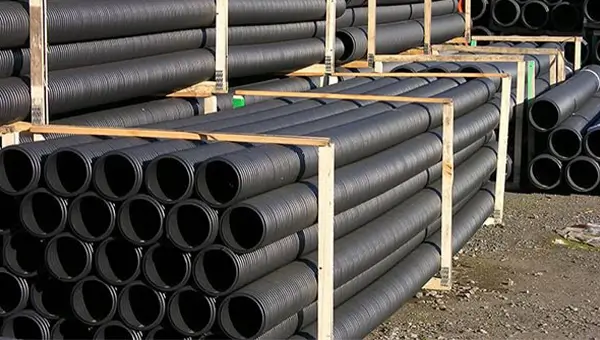Once you’ve successfully installed a surface water drainage system, the next step is to figure out where to distribute all the water that is collected in the drainage pipes.
We’re assuming you’re working with rainwater drains only- this means the water comes from roofs, driveways or roads and the water is therefore untreated and free from major pollutants- you may often hear this water called ‘stormwater’.
Rainwater drains are directed to a different endpoint than wastewater drains. This is called the outfall and there are a few different options where the surface water can go at the end of the drainage system.
Ditch or drywell

A common option is to have the water run off into a ditch or drywell which is essentially a hole in the ground which remains dry most of the time. When water is flowing it can run into the ditch which will hold the water and slowly release it back into the soil to avoid flooding. These can be wrapped in a geotextile fabric to avoid mud and silt build-up and this also allows the water to pass through it. Using some gravel in and around the well or ditch will also help the absorption of the water.
Headwall Charge
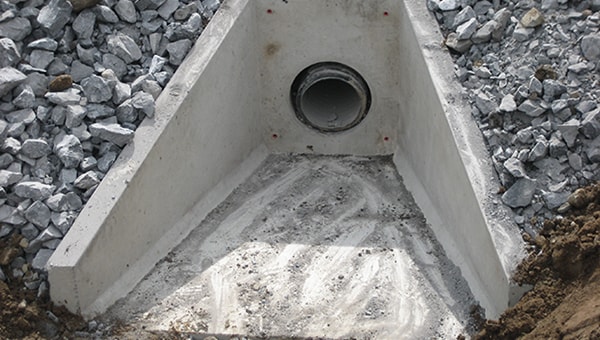
If digging a huge hole in your garden isn’t an option, another solution could be to direct the water into a pre-existing watercourse if that’s a possibility depending on location. To do this you would need to use a solid plastic pipe, such as twinwall, and surround the outlet with concrete into the bank of the watercourse so as not to damage the bank below with erosion from the water flow. Local water authorities will provide specifications and guidelines for installing this.
Soakaway
Installing a soakaway crate such as RAINBOX®, acts as an underground reservoir to collect the water from persistent rain to prevent flooding. Wrapping the system with a geotextile, water is collected and slowly soaks back into the ground through an infiltration process. For attenuation, water can be stored within the crates and, with flow controls, can be slowly released back into a watercourse.

Neighbouring properties
It’s not a good idea to have your unwanted rainwater head anywhere near your neighbour’s home or property, if they dont have adequate drainage facilities the excess water could cause flood damage or damp to their property.
Street
Redirecting the water onto the streets in residential areas is just sending the problem elsewhere and can cause further problems for more people.
Foul drain
If you are going to connect the drainage pipe system to a foul drain you will need permission from your local water authority.
Unused wooded area
It is against best practice to direct water into a wooded area as anytime you send large amounts of water near tree roots they tend to grow very quickly and can even grow into the pipework itself, causing blockages and rendering the system useless.

